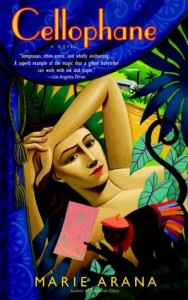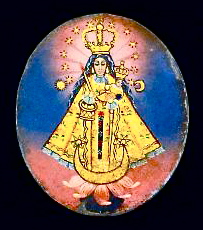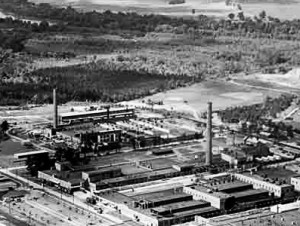“As rain forest Indians like to say: A man steps into the universe because he is summoned. The spirits call. Motion begins. Fate ravels. Once he is in, there is no turning back: He is the spark between no being and being, between vacuum and life—between the silence and the story.”
 When he is just a boy in Trujillo, Peru, Victor Sobrevilla Paniagua has his fortune told one Sunday in the plaza just outside the local basilica. A dwarf fortune-teller, with a miniature cathedral on his cart, has trained a monkey to draw fortunes from small drawers in the façade of the little cathedral. When Victor and his aunt receive his fortune, they see no ironies in the fact that Don Victor had just gone to Mass and confession and that this fortune is drawn from a toy cathedral by a monkey. Both Victor and his aunt believe the destiny inscribed on the small pink paper: “Beware! There are those who think you a dreamer. Pay them no mind. They are small-minded people… who would have you doubt your goals.”
When he is just a boy in Trujillo, Peru, Victor Sobrevilla Paniagua has his fortune told one Sunday in the plaza just outside the local basilica. A dwarf fortune-teller, with a miniature cathedral on his cart, has trained a monkey to draw fortunes from small drawers in the façade of the little cathedral. When Victor and his aunt receive his fortune, they see no ironies in the fact that Don Victor had just gone to Mass and confession and that this fortune is drawn from a toy cathedral by a monkey. Both Victor and his aunt believe the destiny inscribed on the small pink paper: “Beware! There are those who think you a dreamer. Pay them no mind. They are small-minded people… who would have you doubt your goals.”
The paper further advises Victor to pray to the Virgin of Copacabana, a mysterious saint not included in his education at the local convent school, so that he will prevail against the difficulties he will face. “There will come a day,” the fortune says, “when you face something dire, for which you cannot prepare… Fight with all your will… Or fly above it, see its God-given value, surrender to a greater force.”

Saving the fortune and consulting it occasionally, Victor eventually goes to engineering school, doing his apprenticeship with a papermaker. When a sugar refinery goes bankrupt, Victor dismantles its machinery and ships the parts by barge deep into the Peruvian rain forest, where dense and varied plant materials provide unlimited raw materials for paper making. Employing local workers, Victor builds a paper factory which becomes the center of a small community—Floralinda—and meets with much success, just as his fortune has foretold.
All is well with Don Victor’s world—until he makes his “greatest” discovery. In 1952, he discovers, amid dark portents, how to make strong cellophane. This discovery leads to the fulfillment of the dire predictions of the second half of his childhood fortune—and to the action of this novel, which is
divided into three “plagues.” A “plague of truth” follows the discovery of cellophane, as each character, including the priest, confesses his/her romantic indiscretions, all of course kept hidden. A “plague of hearts” follows, with each person pursuing new love or rekindling old love. Ultimately, a “plague of revolution” comes to Floralinda, as government soldiers invade Floralinda, and local workers blame Don Victor and his cellophane for these troubles and the bloody battles which result. Ironies abound.
Rich and atmospheric, Cellophane, the debut novel of author/editor/ journalist Marie Arana, is a consummately “Latin American” novel, very much in the tradition of Gabriel Garcia Marquez (which the author must be tired of hearing, by now), though there is less “magical realism.” Detailing the lives of Don Victor, his wife, their children, spouses, lovers, and servants, Arana creates vibrant portraits of those who have chosen to leave the city for a more “authentic” life in the deepest jungle, along with those who have lived there all their lives. As one might expect, the Catholicism of the “civilized” cities often runs counter to the belief in a vibrant spirit world by the native inhabitants, with the tension between reality and spirit infusing the action throughout. The whole concept of cellophane itself, an artificial material through which one can see the reality inside, parallels many of the conflicts within the novel and within Don Victor.

Virgin of Copacabana
Considered a “shape-changer” because of his ability to create new materials, Don Victor practices the local religion, not Catholicism, and regularly visits a curandero (healer) where he ingests hallucinogens as an act of purification. Other characters, some of them devout Catholics, show the “interconnectedness of all things” by accepting treatment from a local curandero, treasuring magic talismans (such as the hat of an ancestor), believing prophetic dreams, and, deep in the jungle, making unexpected discoveries about themselves, the spirit world, and the unity of life.
Expansive in scope and theme but magnificently controlled in its execution, Cellophane is thoroughly entertaining, filled with humor and irony and many hilarious scenes. Within her warm humor, Arana deals with themes of creativity and the spirit, love and responsibility, society vs. solitude, liberty vs. autocracy, and the conf lict between new and old ways of living. Swirling from present to past and back, as the characters’ backgrounds and action combine, Arana develops engaging characters and the fully drawn community of Floralinda, creating a novel that lovers of literary fiction will celebrate.
lict between new and old ways of living. Swirling from present to past and back, as the characters’ backgrounds and action combine, Arana develops engaging characters and the fully drawn community of Floralinda, creating a novel that lovers of literary fiction will celebrate.
Photos, in order: The author’s photo appears on http://appserv02.uncw.edu
A primitive, painted medallion of the Virgin of Copacabana, is on display at the Brooklyn Museum.
Don Victor’s cellophane factory may have resembled this detail of a cellophane factory built in 1927 by DuPont, along a river near Richmond, Virginia.
http://www2.dupont.com.
